Products for Alkaloids
- Cat.No. Product Name Information
-
BCN1983
Heliotrine N-oxide
Botanical source: The herbs of Cynoglossum amabile(CAS NO.:6209-65-0)

-
BCN1795
N-Methylcyclohexaneethaneamine
Botanical source: The herbs of Acacia rigidula(CAS NO.:62141-38-2)

-
BCN3103
1-Hydroxy-9-medroxycanthin-6-one
Botanical source: The barks of Ailanthus altissima(CAS NO.:622408-85-9)

-
BCN4155
5-Hydroxy-2-pyrrolidinone
Botanical source: The herbs of Buddleja asiatica(CAS NO.:62312-55-4)
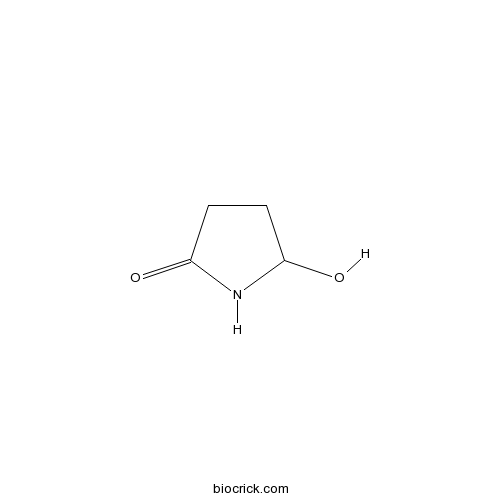
-
BCN1772
4-Amino-4-methyl-2-pentanone
Botanical source: (CAS NO.:625-04-7)
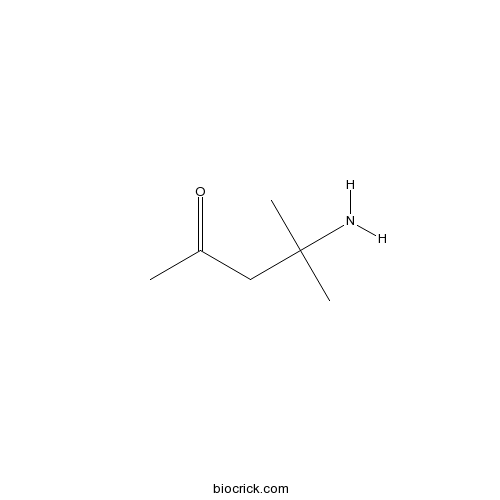
-
BCN2475
Dihydrolycorine
Dihydrolycorine is isolated from Lycoris radiate Herb with antihypertensive and neuroprotective activities. Dihydrolycorine is an inhibitor of protein synthesis in eukarytic cells by inhibiting the peptide bone formation step.(CAS NO.:6271-21-2)

-
BCN2118
Pterophorine
Botanical source: (CAS NO.:62786-99-6)

-
BCN2030
Senampeline A
Botanical source: (CAS NO.:62787-00-2)

-
BCN2033
Senampeline D
Botanical source: (CAS NO.:62787-01-3)

-
BCN2032
Senampeline E
Botanical source: (CAS NO.:71075-42-8)
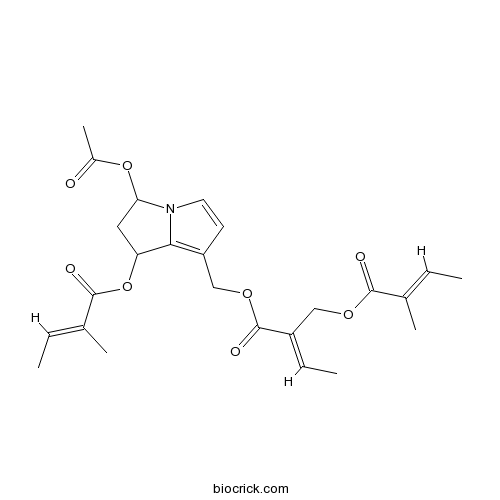
-
BCN2031
Senampeline B
Botanical source: (CAS NO.:62860-52-0)

-
BCN7467
Hecubine
Botanical source: The stems and leaves of Ervatamia hainanensis.(CAS NO.:62874-52-6)
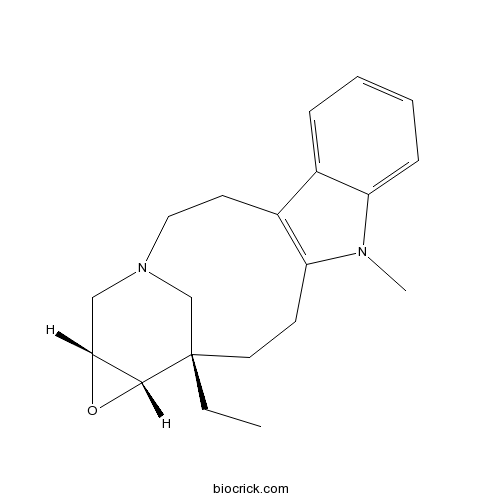
-
BCN3818
L-Phenylalanine
L-Phenylalanine ((S)-2-Amino-3-phenylpropionic acid) is an essential amino acid isolated from Escherichia coli. L-Phenylalanine is a α2δ subunit of voltage-dependent Ca+ channels antagonist with a Ki of 980 nM. L-phenylalanine is a competitive antagonist for the glycine- and glutamate-binding sites of N-methyl-D-aspartate receptors (NMDARs) (KB of 573 μM ) and non-NMDARs, respectively. L-Phenylalanine is widely used in the production of food flavors and pharmaceuticals.(CAS NO.:63-91-2)
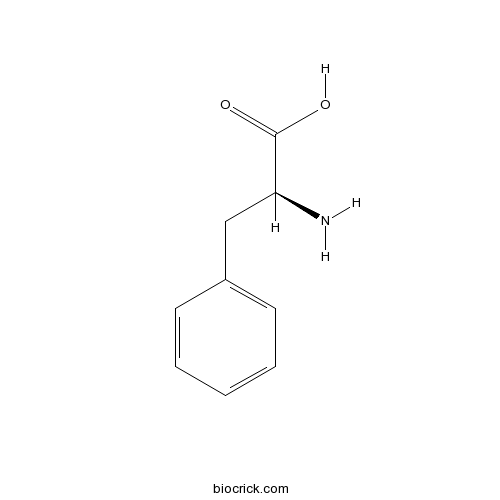
-
BCN5002
Corynoxeine
Corynoxeine, isolated from the hook of Uncaria rhynchophylla, is a potent ERK1/ERK2 inhibitor of key PDGF-BB-induced vascular smooth muscle cells (VSMCs) proliferation.(CAS NO.:630-94-4)

-
BCN2821
Benzoylhypacoitine
Benzoylhypaconine (Benzoylhypacoitine) is a monoester Aconitum alkaloid, is the main pharmacologic and toxic component.(CAS NO.:63238-66-4)

-
BCN5398
Benzoylmesaconine
Benzoylmesaconine is the most abundant component of Wutou decoction, which is widely used in China because of its therapeutic effect on rheumatoid arthritis.(CAS NO.:63238-67-5)

-
BCN2084
Grantianine
Botanical source: (CAS NO.:633-10-3)
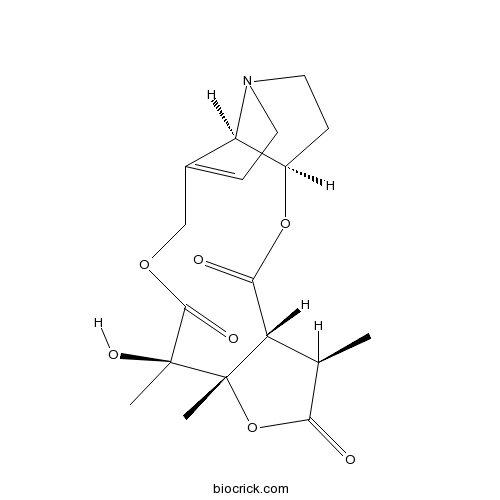
-
BCN1972
Echiumine
Botanical source: 1 Echium sp.(CAS NO.:633-16-9)
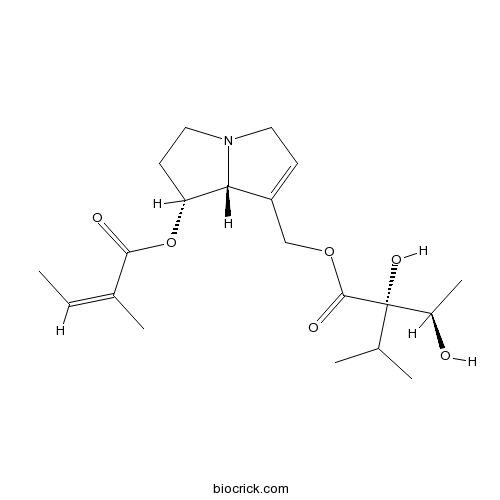
-
BCN6319
Berberine hydrochloride
Berberine chloride is an alkaloid isolated from the Chinese herbal medicine Huanglian, as an antibiotic. Berberine chloride induces reactive oxygen species (ROS) generation and inhibits DNA topoisomerase. Antineoplastic properties.(CAS NO.:633-65-8)
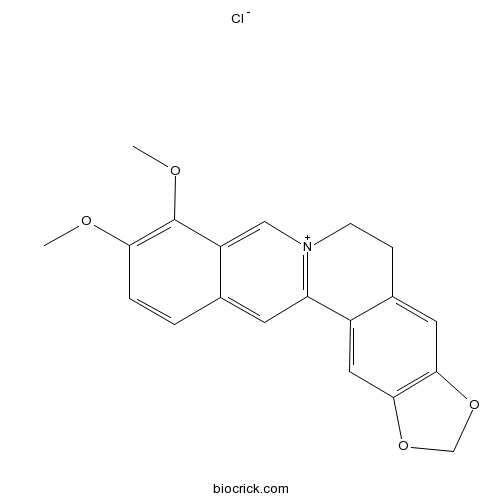
-
BCN2574
Berberine hydrogen sulphate
Berberine sulfate is an alkaloid isolated from the Chinese herbal medicine Huanglian, as an antibiotic. Berberine sulfate induces reactive oxygen species (ROS) generation and inhibits DNA topoisomerase. Berberine sulfate has antineoplastic properties.(CAS NO.:633-66-9)

-
BCN4175
2-Amino-3-dodecanol
Botanical source: From Clavelina oblonga(CAS NO.:)

-
BCN3491
Ajmalidine
Botanical source: The root of Rauvolfia verticillata(CAS NO.:639-30-5)

-
BCN6509
Akuammidine
Botanical source: The herbs of Rauwolfia vomitoria(CAS NO.:639-36-1)

-
BCN6271
Colchicine
Colchicine is a tubulin inhibitor and a microtubule disrupting agent. Colchicine inhibits microtubule polymerization with an IC50 of 3 nM.(CAS NO.:64-86-8)

-
BCN7944
Tamgermanetin
Botanical source: The herbs of Polygonum orientale(CAS NO.:640235-90-1)





